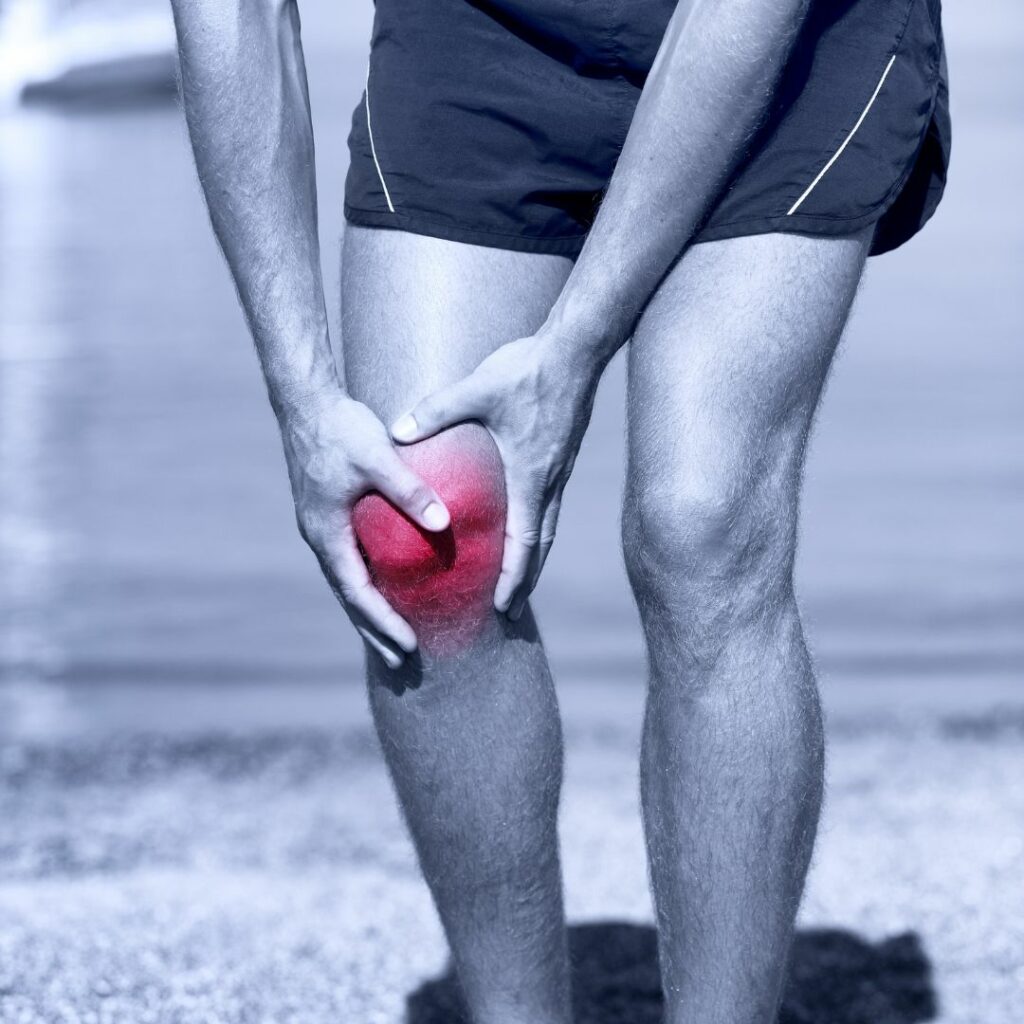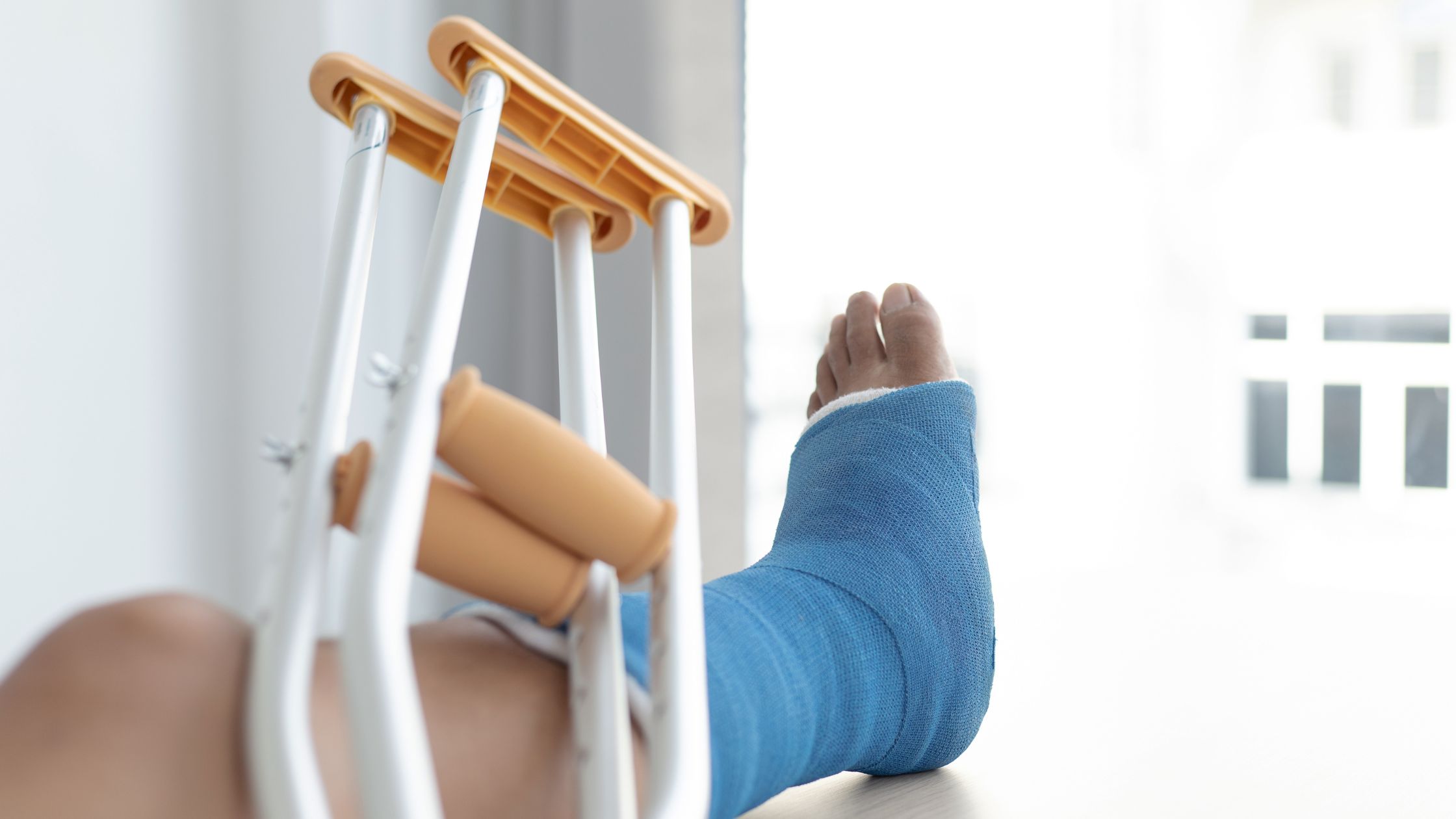Every month, I am asked about this in some form or other. There are many reasons we may be in pain, and understanding your specific condition must inform your best course of action. But in general, let’s consider the three main ways to approach strength training around an injury or source of chronic pain.
They are:
- Modify how you train the injured/painful area.
- Strength train around the injury, avoiding it while training other muscle groups.
- Refrain from training entirely.
Let’s discuss what each of these options looks like, and when it might be appropriate.

But first, why are we training again?
To figure out what to do, it can be helpful to recall the main purpose of resistance training. Training our muscles improves our mental wellbeing, gives us a sense of gratification, and can create some dietary wiggle-room. And those things are great! However, the main purpose of training our muscles is to prevent them from atrophying through disuse.
One day, we might lose the ability to live independently. If that happens, the most common reason is a lose off the strength and muscle needed to move without help. Strength training safely allows us to delay (and shorten) this chapter of our lives for as long as possible, allowing us to serve and support those around us while enjoying a full and gratifying existence.
The other very common reason people lose the ability to live alone is a decline in cognitive function. It should come as no surprise that strength training may be the single best tool to prevent cognitive decline! (click to read more)
This is what we are working to preserve when we strength train – preserving our muscle to extend our healthspan, and our mental clarity to enjoy life independently.
To do this, we must consistently send the message to our bodies that our muscle mass is essential, or else our bodies will slowly get rid of any muscle fibers deemed “non-essential.”
Consistency is the key.
It is tempting to take extended breaks after an ankle sprain, or any time an old joint pain flares up. But this is a recipe for decline. We’ll be our best selves for the longest time if we can find ways to train even when one part of our body is in pain.
Knowing this, let’s look at the three courses of action listed above.
Option 1: Modify how we train the painful area.
If my old shoulder injury flares up, I could avoid it altogether. But this may only be the right move if the flare up is due to a really acute aggravation. If I took a fall, or made a bad decision during a game of flag football, the local inflammation may be best served by complete rest of that joint. But if the pain is chronic, recurring, and can be brought on easily without trauma, it may be wiser to learn ways to work around that pain. It might be that I can still send that crucial message: “Don’t Atrophy!” I just need to be creative about how I load my body. Perhaps lighter loads are the ticket, or different exercise variations. With some ingenuity, we can often find an option that allows for fatiguing the muscles without aggravating the flared up joint or area.
This is why we try to have many options at StrengthSpace. By having a menu of exercises ready for each joint and muscle group, we can quickly modify an exercise routine on short notice to navigate around transient pain.

Example 1: Recurring Knee Pain
Bill has a minor tear in the meniscus of his left knee which he manages well without surgery. But occasionally, it can become painful if he twists wrong in the garden.
Bill usually does Leg Press as his first exercise. When he comes in for his workout today, we find that the leg press is uncomfortable for him. He then remembers that his knee was bothering him all weekend, and we immediately modify the workout to put two hip exercises first. He performs those exercises well, because they don’t involve his knee. Now we know we have successfully trained some of the biggest muscles in his lower body. Even if we can’t leg press, we have prolonged his healthspan. Thank goodness he didn’t skip the workout!
We then go and try the leg press with 30% less weight, and with a smaller range of motion. Bill finds that this lighter weight doesn’t bother his knee. And because of the hip exercises, Bill is fatigued, and is able to still challenge his thigh muscles productively, even with the lighter weight. He may even feel better afterwards, as controlled muscular effort actually has analgesic effects. In this case, modifying our existing workout was the best plan.
Option 2: Strength train AROUND the injury.

Let’s say we are instead dealing with a brand new physical problem. During the very acute inflammation of a recent injury, it may be best to rest those tissues completely while training every other part of the body to preserve as much muscle mass and health as possible.
Example 2: New wrist injury
Imagine Carol was playing tennis on vacation last week, but fell and hurt her wrist. She is unable to bend it without discomfort, and has an appointment with her doctor tomorrow to have it looked at and to possibly get imaging done.
She is tempted to skip her workout, but decides to come in and see what can be done.
Carol knows that she can’t do anything that involves pressure through her hand. However, she already took a week off while on vacation, and she doesn’t want to start losing muscle mass. Luckily, we have dozens of machines at StrengthSpace which allow us to challenge Carol’s calves, thighs, hips, trunk, shoulder muscles, and even the muscles of her uninjured arm, all while completely avoiding her painful wrist.
In this case, it makes sense to train around the injury completely. Not only can she train to preserve all the healthy, uninjured muscles and joints she has, but she may even accelerate her own healing. Resistance training leads to the release of important signaling molecules from our muscles which help orchestrate healing and repair throughout the body!
Examples of injuries that we can easily strength train AROUND:
– chronic back or neck pain.
– fractured ribs that are still healing*
– broken bones in a brace or cast*
– hernias which are stable*
– recent surgeries
*After management/evaluation by a physician.
In all these cases, strength training around the injury is actually quite easy, as we simply work all the uninvolved parts of the body in a safe manner, while still giving the involved body region complete rest to heal.
Option 3: Refrain from strength training entirely.
Sometimes, strength training around an injury or systemic condition isn’t possible, because the issue is too severe.. Such conditions might include a musculoskeletal injury that is so fragile that any exertion would exacerbate it, such as a new lumbar spine injury, a new inguinal herniation or pelvic prolapse, or a surgical procedure that requires that blood pressure be kept low during the recovery period. When it would be impossible to train any significant muscle group on your body without placing you at risk, of course you should rest.
I’ll emphasize this again: refraining from exercise should be reserved for severe situations where it is impossible for your instructor to help you safely exercise around your condition or painful joint.

Conclusion
When in doubt, call your physician or physical therapist to find out if you have an absolute contraindication for any exercise. It can help to specify whether this contraindication includes low-load, machine based or isometric (motionless) muscle strengthening exercise. And it can also help to remember that physicians tend to have a slight bias for overly conservative recommendations.
If there is no frank contraindication, your exercise physiologist instructor should be able to clearly explain how you can perform strength training around an injury in a manner which will not make it worse. Once you have a good understanding for how that can be done, you can exercise with confidence, knowing you are improving your health.
There are times when resistance training is best avoided. But the research is overwhelming that most of the time, activity is better than complete rest, even after the most severe of medical issues. This is especially true for chronic pain conditions. When your neck or shoulder is stiff and aching, heel raises and leg extensions are far more health-promoting than bed rest. And if your low back or knee is especially painful, there are many things that can be done in a sitting position for your arms that will preserve valuable muscle tissue while you recover from your flare-up.
Whenever possible, consistently send a strengthening message to all the muscle-mass you have surrounding those joints you can safely move. Years from now, when you have preserved muscle and are still thriving independently, you will be glad you did!

